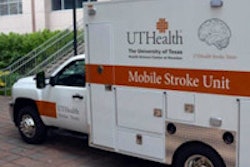Because most recurrent ventricular tachycardia involves a myocardial scar substrate, imaging that assesses cardiac scars and anatomy could help plan and guide VT ablation, Dr. Antonio Esposito, from Vita-Salute San Raffaele University in Milan, told AuntMinnie.com.
The study sought to evaluate the feasibility and usefulness of integrating MDCT data with EAM for VT substrate assessment, VT mapping, and ablation guidance in 20 patients suffering from recurrent VT episodes.
The protocol included coronary CT angiography and a low-kV delayed scan 10 minutes after contrast media administration. The 3D CT model was uploaded and coregistered with high-density bipolar maps using CartoMerge software (Biosense Webster). Next, a point-by-point correlation was performed between low-voltage areas at bipolar EAM and scars on the 3D CT model using homegrown software, according to the abstract.
Correlation between the two models was high except in a few cases that lacked low-voltage regions, the authors reported. Details will be discussed during the presentation.
"Coregistration of the CT-based 3D model of the heart and the EAMs on the Carto system is feasible and may be useful for identification of the VT substrate, potentially improving ablation success," Esposito concluded.



















